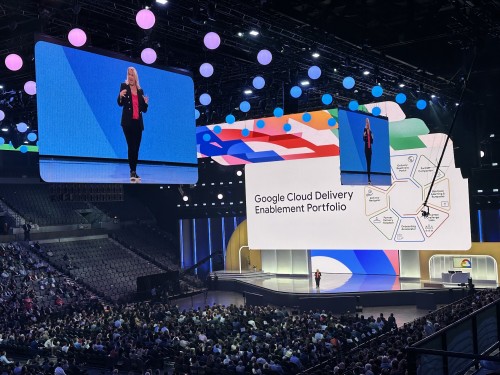The Evolution of Cloud Strategies
Since the birth of cloud computing platforms, organizations faced the daunting task of choosing a single cloud provider, often leading to vendor lock-in concerns, limited flexibility, and the risk of service deprecation. However, the advent of containerization and orchestration technologies has transformed cloud-based architecture. Now, developers can design applications that utilize the best services across multiple platforms.
The Role of the Well-Architected Framework
To navigate the multi-cloud landscape effectively, developers can turn to the Well-Architected Framework (WAF). AWS, Azure, and GCP each offer their version of WAF, providing best practices for designing and optimizing cloud architectures. The pillars of the WAF serve as a guideline for developers seeking to build resilient, secure, and efficient multi-cloud applications.

Pillars of the Well-Architected Framework
Operational Excellence
Operational excellence emphasizes running and monitoring systems to continually improve processes and procedures. For developers crafting multi-cloud applications, this pillar becomes the cornerstone of a strategy that prioritizes seamless operations and ongoing refinement. Implementing application observability practices as part of your operational excellence strategy contributes to the efficient management and timely identification of bottlenecks, performance issues, and general areas for improvement.
Security
In a multi-cloud scenario, security is paramount. Protecting information and systems across different providers requires a holistic approach. Developers must design applications with robust identity management, encryption, and access control mechanisms. Aligning with the security pillar ensures that multi-cloud applications are fortified against potential threats, creating a resilient security posture across the entire infrastructure.
Reliability
For multi-cloud applications, reliability is undoubtedly the most important. The ability to recover quickly from failure is crucial in maintaining uninterrupted service availability. Developers can design applications with fault-tolerant architectures, implementing redundancy and failover mechanisms. By aligning with the reliability pillar, developers ensure that their applications withstand disruptions, be it in Azure, AWS, GCP, or any combination thereof.
Cost Optimization
Cost optimization is a universal concern, and in the context of multi-cloud strategies, it takes on added significance. Developers must adopt a strategic approach to resource allocation, leveraging the strengths of different providers to minimize unnecessary costs. This involves right-sizing workloads, dynamically scaling resources, and exploring pricing variations. Cost optimization, as a pillar, guides developers in achieving efficiency without compromising performance.
Performance Optimization and Efficiency
Performance optimization and efficiency is closely related to cost optimization but has some crucial aspects to consider when building multi-cloud applications. Rightsizing workloads and services to meet specific requirements is essential for optimal performance. Developers can leverage cloud-native services and practices to enhance efficiency. Whether it's utilizing serverless computing or microservices architecture, aligning with this pillar ensures that applications perform optimally across diverse cloud environments.
Considerations for Developers in Multi-Cloud Development
1. Architecture Purpose
The purpose of your architecture dictates the factors you should consider when developing on multiple cloud providers. Whether it's enhancing redundancy, optimizing costs, or prioritizing performance, understanding the primary objectives of your architecture sets the stage for effective decision-making.
2. Provider Compatibility
While containerization and orchestration provide abstraction layers, ensuring provider compatibility remains crucial. Developers should assess the compatibility of their applications with the chosen cloud providers, considering factors such as API consistency, service offerings, and integration capabilities.
3. Interoperability
Interoperability is a key consideration in multi-cloud development. Developers should choose technologies and standards that facilitate seamless communication and data exchange between different cloud providers. This ensures a cohesive, integrated solution that spans diverse cloud environments.
4. Governance and Monitoring
Governance and monitoring play pivotal roles in multi-cloud environments. Developers must implement robust observability tools to ensure security and performance of the application are not degraded. Monitoring tools should provide visibility into the health and performance of applications across all selected cloud providers.

Crafting a Multi-Cloud Strategy
Armed with the pillars of the Well-Architected Framework and mindful considerations for multi-cloud development, developers can craft a robust strategy:
1. Assess and Define Architecture Purpose:
Identify the primary objectives of your architecture (e.g., redundancy, cost optimization, performance).
Tailor your multi-cloud strategy to align with the specific goals of your application.
2. Evaluate Provider Compatibility:
Assess the compatibility of your application with the chosen cloud providers.
Ensure that APIs, services, and integration capabilities align seamlessly with your development needs.
3. Prioritize Interoperability:
Choose technologies and standards that promote interoperability.
Enable smooth communication and data exchange between different cloud providers to create a cohesive solution.
4. Implement Governance and Monitoring:
Establish robust governance frameworks to ensure compliance, security, and performance.
Deploy monitoring tools that provide comprehensive visibility into the health and performance of applications across diverse cloud environments.
5. Adopt Well-Architected Framework Principles:
Embrace the pillars of the Well-Architected Framework (Operational Excellence, Security, Reliability, Cost Optimization, Performance Optimization and Efficiency).
Align development practices with the guiding principles of the framework for a holistic and effective multi-cloud strategy.
In the swiftly evolving realm of cloud computing, the decision on which cloud provider(s) to choose has evolved into a nuanced conversation. Developers now wield the freedom to adopt multi-cloud strategies, capitalizing on the unique strengths offered by various providers. By aligning their approach with the foundational principles of the Well-Architected Framework and meticulously considering pivotal factors in multi-cloud development, developers can embark on their projects with a sense of assurance, fashioning applications that exude resilience, security, and optimized performance across diverse environments.
While the journey towards achieving multi-cloud excellence presents its share of challenges, strategic planning and unwavering adherence to best practices empower developers to fully unlock the boundless potential of the cloud. We can help you do this. Reach out to Improving to learn more.




